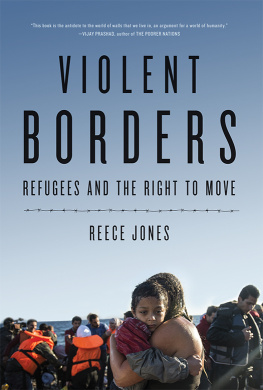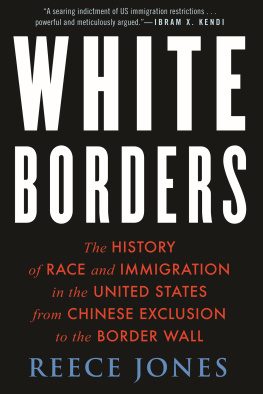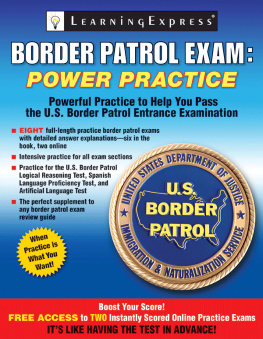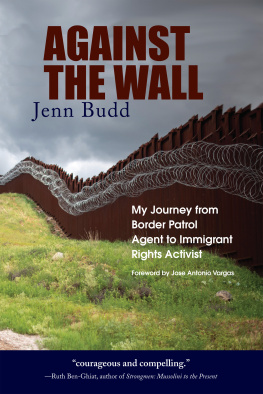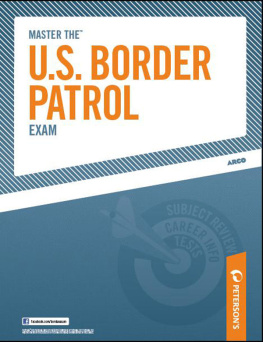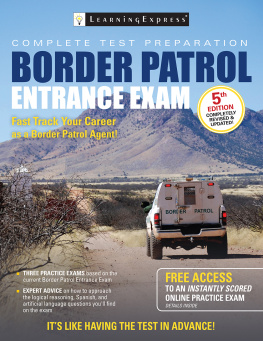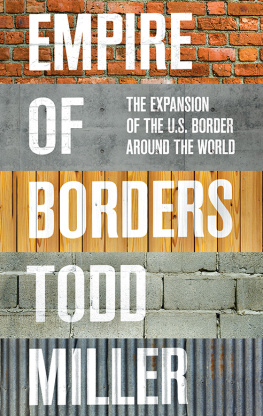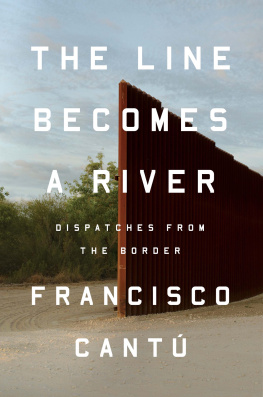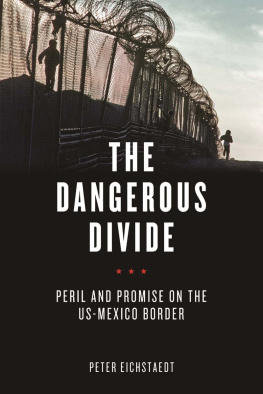
ALSO BY REECE JONES
Border Walls
Violent Borders
White Borders

Contents



THE WINDSHIELD WIPERS SWIPED BACK AND FORTH AS Border Patrol Agents Brady and Harkins waited by the side of Interstate 5 near San Clemente, California. It was early in the evening of Sunday, March 11, 1973. On the news, there were reports about the standoff between the American Indian Movement and federal officers at Wounded Knee, the brewing Watergate scandal, and the impending departure of the last American troops from Vietnam. The agents vehicle was parked perpendicular to traffic and their headlights lit up the raindrops splashing onto the pavement, growing into pools on the side of the highway. The clouds obscured the glow of the moon that normally reflected off the Pacific Ocean, only a few hundred feet to the west. Every few moments, a northbound vehicle passed through the headlight beams, briefly illuminating the profiles of the passengers inside.
The rainy weather and a shortage of agents on duty that night forced Brady and Hawkins to close the permanent Border Patrol checkpoint on the interstate, which was about halfway between San Diego and the rapidly expanding southern suburbs of Los Angeles. They were sixty-six miles north of the busiest border crossing in the world, where the San Ysidro Port of Entry leads to Tijuana on the other side. The agents knew from experience that smugglers monitored the interior checkpoint on I-5 and waited until it was closed to send their human cargo north. The Border Patrol regularly closed the checkpoint on Sunday afternoons so as not to inconvenience Americans traveling back home to Los Angeles from a weekend outing in San Diego, but it also occasionally closed due to inclement weather or lack of staffing, as was the case this evening.
Although the agents were not eager to get out in the driving rain and the 50F temperatures, they carefully observed the passing cars to see if the brief glimpse of the silhouettes suggested the vehicle contained undocumented immigrants. After a few minutes, a 1969 Chevrolet sedan caught their attention. There were three people in the vehicle, two men and a woman. After quickly discussing it, the Border Patrol agents agreed that all three looked Mexican. They switched on their siren, put the car in gear, and began the pursuit.
Felix Brignoni-Ponce looked nervously in his rearview mirror as the flashing lights danced around in the driving rain. He hoped they had safely slipped past the shuttered Border Patrol checkpoint, but as the patrol car picked up speed and settled in behind them, he knew they were in trouble. Felix had no other option but to pull over to the side of the interstate and wait for the Border Patrol agents to approach.
The patrol car doors opened, and the agents flashlights signaled that one agent was coming to the drivers side door while the other was positioned behind the passenger side of the Chevy. Felix rolled down his window and raindrops landed on his arm. The agent asked about the citizenship of the people in the car. Felix did not speak much English, but it became clear that the agents hunch that he was from Mexico was wrong. He grew up in Puerto Rico and was a U.S. citizen. He produced his ID card and showed it to the agent. Agent Harkins asked him to step out of the vehicle and they walked back to the trunk, which Felix opened and Agent Harkins inspected.
Agent Brady rapped his knuckles on the passenger-side window and identified himself. As the window rolled down, he asked the two passengers about their citizenship in English. They indicated that they only spoke Spanish, so he asked them again in Spanish. Elsa Marina Hernndez Serabia did not have an ID card but informed the agent that she was not Mexican, but Guatemalan. She did not have documents that gave her the right to be in the United States. The only person from Mexico in the vehicle was Jos Nuez Ayala, but he also did not have the proper documents to be in the United States. Elsa and Jos were handcuffed and taken to the San Clemente Border Patrol station for processing.
Although Felix Brignoni-Ponce was an American citizen, he was also arrested and charged with a felony: knowingly transporting illegal aliens. Felixs two passengers were called as witnesses in the trial; the following day, the charges against them were dropped and they were deported. On May 14, 1973, the jury found Felix guilty on both counts. Judge Turrentine sentenced him to four years in federal prison followed by five years of probation.
In their report about the stop and in their sworn testimony at the trial, Agents Brady and Harkins stated that the only reason they stopped the vehicle was the Mexican appearance of the people inside. Felix, with the help of his tireless lawyers from the Federal Defenders of San Diego, appealed to the Ninth Circuit Court of Appeals in San Francisco, arguing that race alone did not meet the standard of reasonable suspicion to justify a traffic stop by the Border Patrol. Indeed, Felix was a U.S. citizen and was of Puerto Rican, not Mexican, origin. The fundamental question of the case was whether the Border Patrol could use racial profiling to make a warrantless stop on an American interstate highway over sixty miles north of the border.
The Fourth Amendment of the Constitution protects everyone inside the territory of the United States, both citizens and noncitizens, from unreasonable searches and seizures. It requires police officers to obtain a warrant from a judge based on probable cause that a crime has been committed in order to carry out a search. Can the Border Patrol really stop a car on a highway over sixty miles north of the border based only on the fact that the driver and passengers looked Mexican? The case would go all the way to the highest court in the land, but at the time Agents Brady and Harkins made the stop, they were operating well within the loosely defined regulations that guided the actions for the Border Patrol in its first fifty years of existence.
When the United States Supreme Court heard Felix Brignoni-Ponces case in 1975, it faced a difficult decision about what took precedence on American roads: the authority of the Border Patrol to search for undocumented immigrants, or the Fourth Amendments constitutional protections against unreasonable searches and seizures. The verdict that the justices reached about the legality of the Border Patrols stop continues to shape the lives of hundreds of millions of Americans and immigrants through the present day.

In the summer of 2020, there were civil demonstrations across the United States after the killing of George Floyd, an unarmed Black man, by Minneapolis police. Among the many videos of excessive police violence that circulated that summer, a series of videos stood out that documented mysterious late-night detentions by heavily armed agents in Portland, Oregon, in July 2020.


